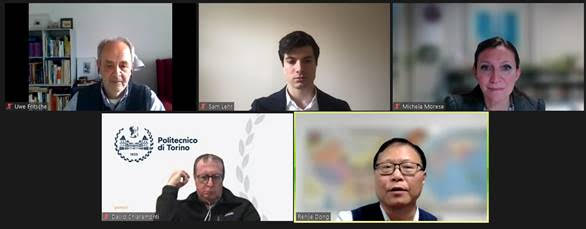This session discussed perspectives of biogas and biomethane in different parts of the world – Europe, North America, China and developing countries – and the role of policy frameworks for further deployment.
It is important to consider that biogas is not just a renewable energy solution, but provides a strong contribution to circular and biobased economy, mostly starting from waste and residual flows and, amongst others, circulating nutrient and organic material flows, providing sanitation of treated material and contributing to development of rural areas.
Sustainability of green gas concepts needs to be considered to make sure they positively contribute.
Moderator
Uwe Fritsche, Scientific Director, IINAS, Germany
Presentations
Sustainability of green gas ![]()
David Chiaramonti, Professor of Systems for Energy and Environment and Energy Economics, Polytechnic of Turin, Italy
A global perspective on green gas ![]()
Maria Michela Morese, Executive Secretary, Global Bioenergy Partnership (GBEP), Italy
Perspective of China ![]()
Renjie Dong, Head, Bioenergy and Environment Science & Technology Laboratory/Biomass Stoves Test Laboratory/Carbon-Neutral Agriculture Research Center, China Agricultural University (CAU), China
Perspective of the United States ![]()
Sam Lehr, Manager of Sustainability and Markets Policy, RNG Coalition, United States
Perspective of the EU ![]()
Uwe Fritsche, Scientific Director, IINAS, Germany

Highlights
- Biomethane is fully compatible with the gas infrastructure and is one of the major components to decarbonize the gas system.
- Biomethane (derived from manure, sludges, and organic waste) is among the most sustainable options for transport and can be implemented immediately in natural gas vehicles. The paying capacity in the transport sector is much higher than other applications of natural gas. In the US, Clean Fuel Standards in transport are the largest driver for upcoming biomethane/RNG demand.
- There are multiple benefits in emerging economies to use farm and livestock waste as well as household waste for biogas (e.g., reducing energy expenditure, less methane emissions, less indoor air pollution). The main challenge is the lack of knowledge (which may lead to poor management of anaerobic digestors) and the lack of capital (e.g., to buy generators to convert excess biogas into power and avoid flaring). This requires capacity building and training in rural areas, and international collaboration, for instance OECD countries to support low-income countries in this.
- The agreement at COP26 to reduce methane emissions by at least 30% by 2030 is extremely important for the biogas sector as it can drastically avoid methane emissions from biowaste.
- In China there are many small and medium-scale applications of biogas, mostly based on manure or household waste. Anaerobic digestion with biogas production is one of the cheapest ways to treat manure or biogenic waste and should also be deployed at the medium scale. Considering the potential of animal manure and crop residues, China could replace 70% of its current natural gas consumption. Biogas can also serve as a buffer in the energy system, to support other low-carbon solutions. Biogas generation and the field application of digestates can contribute a lot to carbon neutralisation in terms of avoiding methane leaching, fossil fuel and chemical fertilizer substitution, and increased soil carbon sinking.
- Transforming the waste management sector deserves much more attention. For every biowaste there should be a reflection if biogas could first be derived as it captures the easily degradable fractions that would otherwise release CH4 and CO2 into the air. The harder to degrade fractions can end up in digestate, compost or biochar.
- In agricultural systems where biogas production is integrated, the carbon that is sequestered in the soil (through good management practice and feeding back the digestate and/or biochar to the soil) should also be recognized. An effective carbon accounting logic is needed, including for land carbon sinks.
- Promising future solutions that take decades to implement at scale may not distract us from implementing good solutions now (such as biogas) and start from low-hanging fruit. ‘Don’t let the perfect be the enemy of the good’.
- Communication is important. The difference between biogenic CO2 (which is part of an atmospheric cycle) and fossil CO2 (which is transferred to the atmosphere from the deep underground) is often still lost in the media and the general public. For biogas and biomethane, the time between biogenic C release to the atmosphere and reabsorption in plants is very short so that these renewable gases contribute to quick CO2 reductions when replacing fossil fuels, or even negative C emissions when co-products (e.g., biochar from digestate) are sequestered in the soil.

Recording


